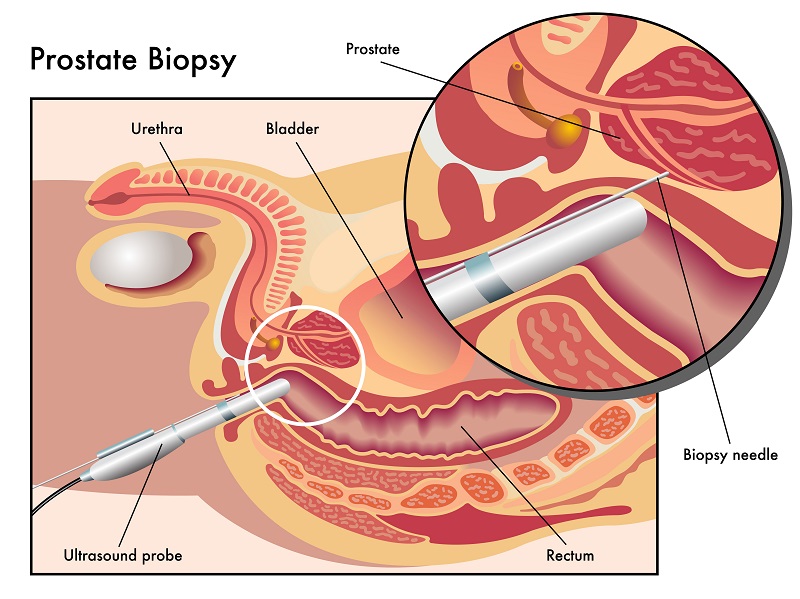If you have an enlarged prostate or are suspected of having prostate cancer, you may be asked to undergo a prostate biopsy.
I thought I would briefly write about what this procedure entails, and what you can expect on the day of the procedure.
Introduction
A prostate biopsy is a procedure in which small samples of tissue are taken from your prostate gland to be examined under a microscope.
Why Is A Prostate Biopsy Done?
A prostate biopsy is usually done when a blood test shows a high level of prostate-specific antigen (PSA) or if a digital rectal exam (DRE) reveals an abnormality in the prostate gland. It may even be performed if the ultrasound scan of the prostate shows an abnormal-looking prostate.
These tests may indicate the presence of prostate cancer or other prostate-related conditions.
A biopsy helps your doctor determine the presence, stage, and aggressiveness of prostate cancer or other disorders.
How Is A Prostate Biopsy Done?
The most common type of prostate biopsy is the transrectal ultrasound (TRUS) guided biopsy.
During the procedure, you will be asked to lie on your side with your knees bent. A local anesthetic will be administered to numb the area.

A lubricated ultrasound probe will be inserted into your rectum, which will generate images of your prostate on a monitor. These images will guide your doctor in taking tissue samples using a thin, hollow needle.
Usually, 10-12 samples are taken from different areas of the prostate.
The procedure typically takes about 15-30 minutes, and you may experience a brief, sharp pain or discomfort each time a sample is collected.
Side Effects
Some common side effects of a prostate biopsy include:
- Blood in urine, semen, or stool: This is normal and should resolve within a few days to a few weeks.
- Pain or discomfort: You may experience mild pain or discomfort in the biopsy area, which can be managed with over-the-counter pain relievers.
- Infection: Although rare, there is a risk of infection following a biopsy. Antibiotics may be prescribed to reduce this risk.
Aftercare
Following a prostate biopsy, you should –
- Take it easy for 24-48 hours after the procedure, avoiding strenuous activities or heavy lifting.
- Drink plenty of water to help flush out any blood in your urine.
- Avoid sexual activities for a few days or until any blood in your semen clears up.
- Take any prescribed medications, such as antibiotics or pain relievers, as instructed by your doctor.
Follow-up
Your doctor will schedule a follow-up appointment to discuss the biopsy results, which are usually available within a week. Based on the results, your doctor may recommend further tests, treatment options, or surveillance.
Contact your doctor immediately if you experience any signs of infection, such as fever, chills, or worsening pain.
Conclusion
A prostate biopsy is a vital diagnostic tool for identifying prostate cancer and other prostate conditions. By better understanding the procedure, potential side effects, and aftercare, you can better prepare for a smooth experience and recovery.
If you have any questions or concerns, please discuss them with your doctor.
- CT Coronary Calcium Score: A Guide for Patients - January 7, 2024
- Gastric Antral Vascular Ectasia (GAVE) – Causes, Diagnosis, and Treatment - August 5, 2023
- Understanding Xanthelasma: Causes, Symptoms, and Treatment Options - June 28, 2023
